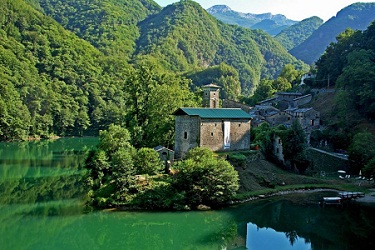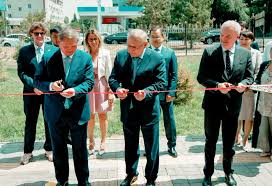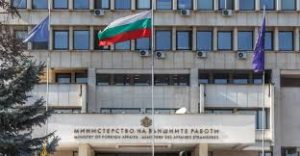Italy’s ancient towns’ beauty

Rome: “Every day I walk the vines,” says Gabriele da Prato, gesturing to the lush foliage surrounding us. “All of my senses are involved. I’m looking, smelling, touching, listening, tasting. I’m having a conversation with nature. I’m in harmony with the earth.”
Walking the vines isn’t the only way the esoteric winemaker harmonizes with the earth. From time to time he serenades them with a few bars from his jazz trombone, too.
We’re standing on a hillside at Podere Còncori, a small, biodynamic vineyard nestled into a corner of Tuscany not much known for its wine. In fact, the area is hardly known at all. But producers like Gabriele may change that, attracting travelers looking to escape Chianti’s crowds and forge a fresh path into the popular region.
Deep in Tuscany’s northwestern reaches lies a hidden valley that remains one of Italy’s most untapped locales. Absent are the classic, calendar page vistas — no vast sunflower fields or undulating rows of grape in sight. Instead, steeply forested ridges and verdant countryside framed on one side by the Apuan Alps — whose marble Michalangelo honed into masterpieces — and the Apennines on the other defines the wild Serchio Valley.
Throughout the region known as the Garfagnana, pocket-sized medieval villages tucked into rugged hillsides await exploration. Weekly markets spill with porcini mushrooms, acacia honey, cured biroldo salami, and pasta made with flour milled from the region’s plump chestnuts. Biodynamic winemakers like Gabriele tend their vines in conjunction with the phases of the moon.
The taxi winds up a long driveway lined with olive trees and lush lavender hedges and delivers me to the Renaissance Tuscany Resort and Spa. Perched on a hill within the historic Il Ciocco Estate, the hotel’s sweeping terrace and bright, salmon-pink walls dripping with heady wisteria clusters makes it feel like an elegant Italian villa.
From my balcony I can see the ancient town of Barga, its Tuscan-hued buildings — cream, ochre, rust — glowing in the afternoon sunlight, mountains in the background cloaked in cloud cover. I’d been traveling for close to 17 hours but the tiny town’s terracotta rooftops and cobbled alleyways beckon, a call I can’t refuse.
Which is how I find myself hitching a ride with Georges Midleje, gregarious manager of the Renaissance, who zips me down from Il Ciocco in his daughter’s Mini Cooper and deposits me beside the entrance to Barga’s medieval hub with a wave of his cigar and a promise to return after he runs a few errands.
Georges may just be the region’s biggest fan. In an era when the word ‘authentic’ has become cliché, the description still holds true in the Serchio Valley. “This is the real Tuscany,” Georges tells me, slinging the little car around blind curves while simultaneously gesturing at the scenery and beeping the horn in warning to oncoming drivers. “These mountains, the flavors, the ancient borghi villages. It’s a rare, authentic corner. The Garfagnana people live the old way.”
The sky opens moments after I pass through Porta Reale, one of two remaining gates leading through the town’s ancient fortifications. I dart along Via Mezzo to a small piazza and wait out the cloudburst beneath a stone and wood-beamed arcade at Caffé Capretz, sipping Campari and soda while the rain pours down inches from my table and an Italian flag flaps in the breeze. Across the way at Da Aristo, a small group sings along to a guitar strumming an American classic rock tune. I have no map and no plan — neither is required to wander Barga’s medieval warren of alleyways.
The dampness left behind by the rain intensifies the chalky scent of the medieval cobblestones and I breath deeply of the centuries as I follow deserted viccoli ever upward to the Duomo San Cristoforo, Barga’s Romanesque cathedral. Standing beside the castle-like church, with its lush lawn and piazza overlooking the Apennines’ verdant ridges, feels more like being in the Scottish Highlands than the Tuscan hills. A fact that is perhaps apropos given that Barga, with more than half of its residents claiming familial ties to Scotland, is considered the most Scottish town in Italy.
Though the town springs to life a couple of times each year when it hosts its summer jazz and opera festivals, today I have Barga — its streets, its cathedral, its views — all to myself, a degree of solitude visitors to Tuscany’s more trodden hilltowns rarely, if ever, experience.
On our way back to Il Ciocco, I mention to Georges that I forgot to buy Parmesan cheese. Seconds later, he swings the car to the curb and cuts the ignition, calling “this is where you get the best parmigiana in all of Italy!” as he disappears into a shop across the street. I enter on his heels and find him already in animated conversation with the two smiling, gray-haired men behind the counter.





